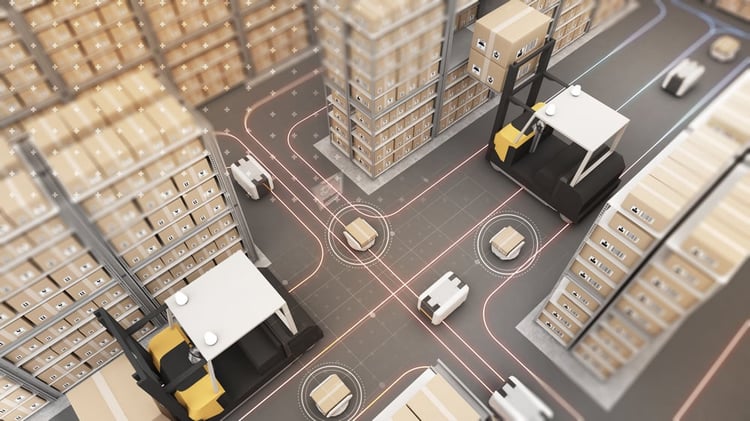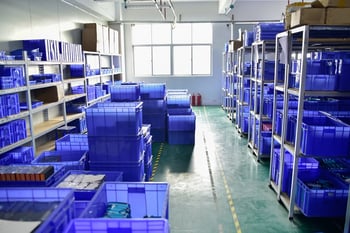
If your business sells, handles, or stores products, its success depends largely on the quality of its inventory management system. It’s not a sexy topic. But it sure is important. Unfortunately, when it comes time to spend capital on innovations that will boost business results, automated inventory management systems are often overlooked.
After all, if you don’t have products in stock to send to customers, any efforts to create viral marketing campaigns will have been wasted. And, if you’re making mistakes with inventory management, your customers will be unhappy, and your results will suffer. Consider these figures:
- Not having an item in stock costs an estimated $17 billion annually in lost sales opportunities.
- The U.S. retail market has an inventory accuracy rate of just 63%.
- Nearly 46% of small to mid-sized businesses don’t use strong inventory management systems.
Since inventory management plays such a large role in your business strategy and results, it makes sense to give it the attention it deserves. Here’s what you need to know about controlling and tracking inventory with digital automation solutions.
Challenges for Traditional Inventory Management
With the surge in eCommerce sales and the increase in on-demand logistics, traditional inventory methods are no longer sufficient to guarantee an efficient supply chain, particularly now that many brands choose to use multiple fulfillment centers and outsource their logistics functions. If you’re on the fence about upgrading to digital automation for inventory management, here are some of the challenges that traditional approaches are still facing:

Insufficient Demand Visibility
For an inventory system to be fully functional, it must have total visibility. As a business expands its supply chain, it’s vital to have a system in place that allows for viewing and tracking inventory in real-time.
Traditional inventory approaches don’t provide this type of transparency. Instead, businesses are left guessing how much inventory is available or moving across multiple channels and locations.
Siloed Supply Chain Communication
Traditional inventory management methods are often incapable of tracking inventory between outbound and inbound logistics operations and sometimes even within a single warehouse. This stifles the communication between third-party logistics providers and internal teams.
With traditional inventory systems, scaling operations becomes challenging if you want to maintain control over the inventory in your network. This can lead to higher logistics costs, backorders and stockouts, inaccuracies, and lower customer satisfaction levels.
Lack of Demand Forecasting
One of the most critical elements of inventory management is the ability to forecast demand accurately. This can give just about any business a competitive advantage and improve results. But traditional inventory management is incapable of providing logistics companies, suppliers, and retailers with the information they need to make smart business decisions.
What is Automated Inventory Management?
As an online business or third-party logistics provider, you should always be concerned about inventory levels. Specifically, you may wish to ask yourself:
- How much inventory do I have on hand?
- What are my best-selling items?
- When should I re-order, and how much?
Since inventory is a moving target, keeping track of it through traditional approaches, like manually counting items and updating spreadsheets, isn’t practical. The rise of automated inventory management solutions has made it easier for companies to control inventory based on demand, save on costs, and improve overall results.

The solution for many businesses is to usher in automated inventory control and tracking solutions. These are modern processes that use advanced technology to manage inventory within the supply chain. With software, mobile solutions, and other integrated hardware, like barcodes, RFID tags, and scanners, warehouse management can gain the visibility it needs.
Benefits of Digital Automation in Inventory Control and Tracking
Whether you’ve been neglecting inventory management or just been reluctant to invest in it, this isn’t something you want to ignore. Here are some of the benefits of digital automation in this area of your business.
1. Digital automation saves you time.
Manual inventory management processes are quickly becoming obsolete due to inefficiencies. It takes too much time to extract information from various systems, figure out stock levels, record changes, and generate reports.
Automated inventory control makes updating and tracking inventory levels a seamless process. When used with other integrated services, such as point-of-sale systems, a business can save a ton of time and ditch the spreadsheets for good.
2. Inventory management helps you predict demand.
What’s in your warehouse now may not be the perfect predictor of demand, but the movement of products is certainly one of them. Unexpected shortages are never something you want to have because it impacts the customer experience. When you automate your inventory management system, you get real-time data on changes in your stock and can set up alerts for automatic re-ordering.
3. Automation minimizes human error.
 Companies still using manual methods for inventory control and tracking find that they also have more issues with human errors. Employees can miscalculate, miscount, or make other mistakes that cause a warehouse to understock, overstock, or simply misplace items that significantly impact their bottom line.
Companies still using manual methods for inventory control and tracking find that they also have more issues with human errors. Employees can miscalculate, miscount, or make other mistakes that cause a warehouse to understock, overstock, or simply misplace items that significantly impact their bottom line.
Since automated inventory systems work with minimum human intervention, these types of errors are substantially reduced. For example, when an inventory count is completed using scanners, the totals are automatically stored in the system and ready for use by management or other stakeholders.
4. Digitization makes reporting simple.
If a warehouse has to pull figures from a spreadsheet or clipboard for reporting, how timely or accurate will those figures be? To understand what’s going on in your business at any given moment, you need to know what’s going on with your inventory.
When you automate your inventory management and tracking, you can create reports on the fly that tell you what you have and where it is located. You can also pull up trends that help you make better decisions about the business.
5. Automated inventory management is scalable.
 A business that relies heavily on an outdated inventory management system will be at its mercy when it comes to scaling operations. For example, a warehouse that still uses manual lists on clipboards is going to find it challenging to expand to multiple locations where collaboration is necessary.
A business that relies heavily on an outdated inventory management system will be at its mercy when it comes to scaling operations. For example, a warehouse that still uses manual lists on clipboards is going to find it challenging to expand to multiple locations where collaboration is necessary.
But an automated inventory management system invites scalability. It gives the business real-time data that can be integrated with other locations. This makes it much easier for a business to scale its operations quickly and as needed.
6. It can make your business more money.
Of course, you’ll need to invest in digital automation for your warehouse system. But this list illustrates that the rewards will be worth the effort. A typical U.S. warehouse spends more than half of its budget on labor. You will certainly be able to reduce some of the money spent on the manual maintenance of inventory. You can achieve other cost savings and make more money in the form of improved productivity and efficiency and opportunities to maximize sales opportunities through better customer service.
Digital inventory control and tracking solutions are transforming the modern industry. These are behind-the-scenes solutions that make businesses more efficient, resulting in higher levels of customer satisfaction and better bottom-line results. Contrary to popular belief, a business doesn’t have to get rid of its entire workforce or completely reconfigure a warehouse to implement many of these solutions. They can be integrated seamlessly to work with existing staff and will only create improvements in outdated warehouse systems.










